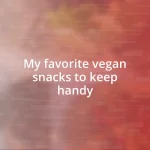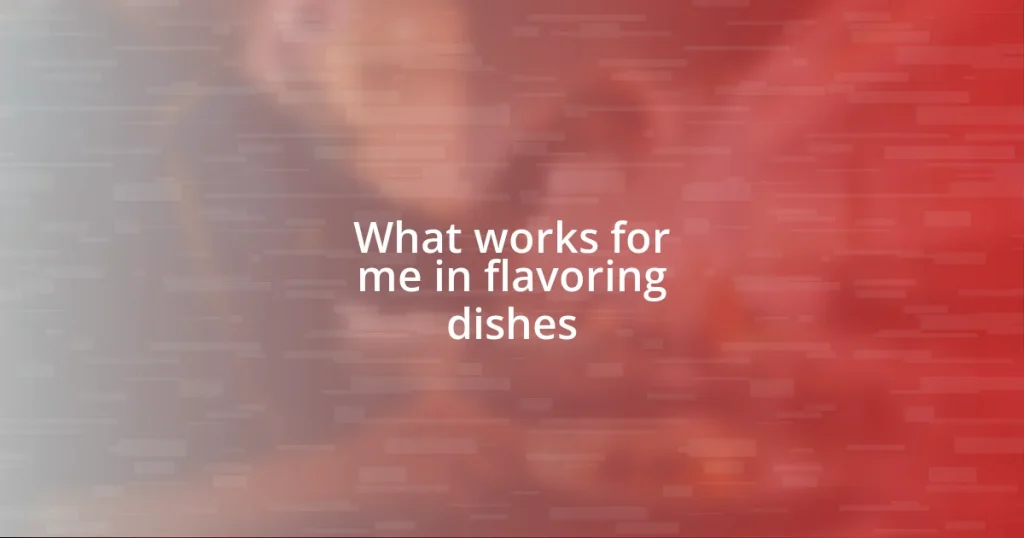Key takeaways:
- Food delivery apps provide convenience and vast restaurant selections, but can overwhelm users with too many choices.
- Different apps have unique features: DoorDash emphasizes local eateries, UberEats is strong with chains, and Postmates offers diverse delivery options beyond food.
- Tracking orders and communication with delivery drivers enhance the overall experience; promptly addressing issues like late or incorrect orders is crucial for a positive experience.

Overview of Food Delivery Apps
Food delivery apps have revolutionized the way we enjoy cuisine from the comfort of our homes. I still remember the first time I used one—it felt almost magical to have my favorite pizza delivered without stepping outside. The convenience drew me in, but I soon realized these apps are more than just digital menus; they offer a vast selection from local restaurants, sometimes revealing hidden gems I’d never have discovered otherwise.
As I navigated these platforms, I quickly found the variety they present can be both a blessing and a curse. Have you ever spent more time scrolling than actually deciding what to order? I certainly have! One night, I ended up deciding on sushi after a 45-minute deliberation—only to regret it later when the craving for tacos hit me. This experience, while humorous in hindsight, illuminated how easily we can be overwhelmed by too many choices—even in food delivery.
Another fascinating aspect is how these apps have shaped our eating habits. I’ve noticed myself trying new dishes that I might have overlooked when dining out. It’s as if each click transforms my dining experience into a delightful adventure. Does anyone else feel a thrill when trying a new restaurant through an app? Each order carries the potential for a culinary surprise, keeping my taste buds eager and my dinner plans exciting.

Popular Food Delivery Apps Compared
When comparing popular food delivery apps, I find it striking how each platform has its own unique flair. For instance, I’ve often noticed that DoorDash seems to prioritize a wider range of local eateries, often introducing me to those quirky spots I would have never stumbled upon before. Meanwhile, UberEats tends to feature larger chains alongside local favorites, which can be a double-edged sword—great when I’m craving familiarity, but sometimes less adventurous.
Here’s a brief comparison of a few popular apps based on my experiences:
- DoorDash: Great selection of local restaurants; frequent promotions and discounts.
- UberEats: Strong brand partnerships; convenient for ordering from popular chains.
- Grubhub: Often offers points towards free food; features user reviews prominently.
- Postmates: Delivers more than just food—think groceries and alcohol; great for last-minute needs.
A unique aspect to consider is how these apps handle delivery times. I’ve had a great experience with Postmates when I ordered late at night, only to have my food arrive faster than expected. Conversely, I remember waiting an eternity for an UberEats order one rainy evening; sometimes, the weather can be a real game-changer in delivery speed.

Navigating Common Issues with Apps
Navigating food delivery apps can sometimes feel like a rollercoaster ride. I recall a particularly frustrating incident when I was eagerly awaiting a late-night burger craving. The app showed my driver was just a few minutes away, but an hour later, I was still staring at the “on their way” screen. This taught me that while technology is powerful, it’s not infallible. Sometimes all we can do is breathe and remind ourselves that food will arrive eventually, hopefully still hot.
There are also instances when the order doesn’t match the expectation. Once, I ordered a gourmet pizza—only to discover that half of it was missing when it arrived. I remember feeling that sinking disappointment as I opened the box, accompanied by the aroma of what was there. After a quick chat with customer service, they promptly issued a refund, which eased my frustration. Engaging with customer support can often transform a negative experience into a more positive one.
In the face of these challenges, it’s essential to know what to expect and how to respond. Here’s a simple comparison table to illustrate these common app issues alongside how I’ve responded to them:
| Common Issue | My Experience/Response |
|---|---|
| Late delivery times | Practice patience and check delivery updates regularly. |
| Missing items | Contact customer support quickly for a refund or replacement. |
| Incorrect orders | Review the order before checking out to minimize mistakes. |

Enhancing the Delivery Experience
To truly enhance the delivery experience, I’ve found that tracking options can make a significant difference. Knowing where my order is in real-time adds an element of anticipation that I genuinely enjoy. I still remember the excitement of watching my food get closer, especially when I ordered from a beloved local taco spot after a long day—I could practically taste those fresh ingredients as they approached!
Another aspect that enhances my experience is the communication from the delivery driver. There’s a certain comfort when the driver messages me about their estimated arrival or even updates on any delays. One memorable evening, my driver texted me that they had a small hiccup, but they were on their way. That simple gesture made me feel valued as a customer, and I was even more grateful when my meal arrived piping hot, just as I had hoped.
Don’t underestimate the power of user reviews and recommendations, either. I often find myself scrolling through ratings before deciding where to order from next. This habit paid off when I stumbled upon a newly opened ramen shop, which had rave reviews. The experience was transformative—it became my go-to comfort food! Isn’t it remarkable how a few words can steer you towards a culinary delight you never knew existed?















